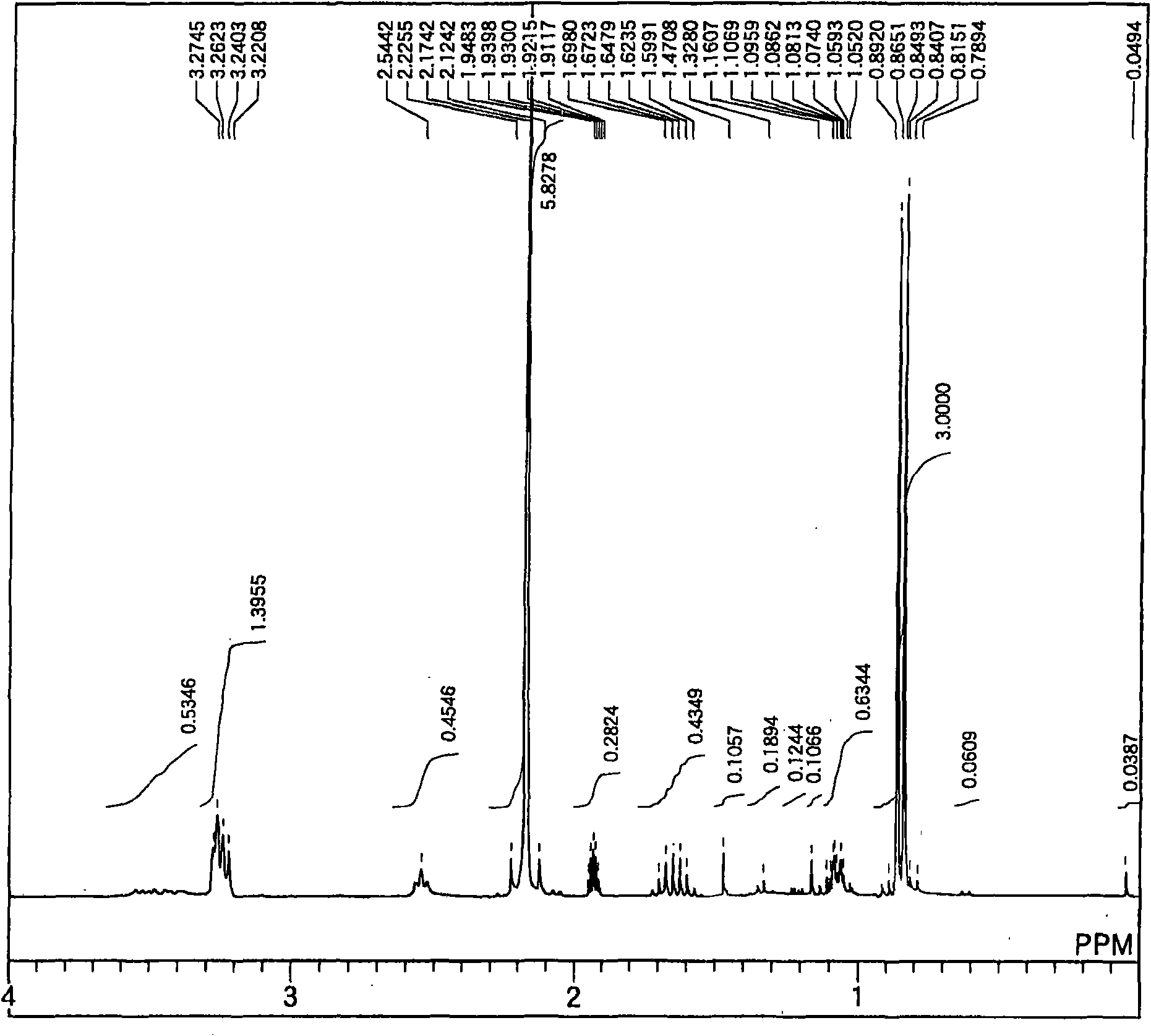Solid catalyst for olefin polymerization, olefin polymerization method, and olefin polymer particle produced by the method
An olefin polymer and olefin polymerization technology, applied in the field of solid catalysts for olefin polymerization, olefin polymerization and olefin polymer particles obtained from the polymerization, can solve problems such as long time and large quantities
- Summary
- Abstract
- Description
- Claims
- Application Information
AI Technical Summary
Problems solved by technology
Method used
Image
Examples
Embodiment 1
[0175] Production of solid catalyst (K) for olefin polymerization
[0176] [Process P1]
[0177] A stirring bar was attached to a 100 ml four-neck flask fully replaced with nitrogen, and 5.01 g of silica gel (trade name: H-122, manufactured by Asahi SITECH Co., Ltd.) dried at 200° C. under a nitrogen atmosphere, and dehydrated toluene were added thereto. 44ml, heated to 50°C by superheating in an oil bath. 2.5 ml of a toluene solution (1M) of triisobutylaluminum was added, and 19.0 ml of a toluene solution of methylaluminoxane (manufactured by Tosoh Fine Chemicals Co., Ltd., aluminum concentration 9.1% by weight) was further added. After reacting at 50°C for 30 minutes, it was further reacted at 95°C for 4 hours. After standing still at 60° C., 36 mL of the supernatant was removed by decantation to obtain a toluene slurry of silica-supporting methylaluminoxane.
[0178] [Process P2]
[0179] The toluene slurry of the silica-supported methylaluminoxane obtained in the step ...
Embodiment 2
[0181] As silica gel (trade name: H-122, manufactured by Asahi SITECH Co., Ltd.), silica gel in which fine particles with a diameter of 4 μm or less were removed by classification, and 16.8 ml of a toluene solution of methylaluminoxane were used, and the same procedure as in Example was carried out. 1 same manufacture. As a result of analysis, zirconium in the powder was 0.18% by weight, aluminum was 16.7% by weight, and silicon was 23.2% by weight. The loss on ignition was 14.1% by weight. In addition, as a result of elemental analysis of the residue after firing, peaks derived from silicon atoms and aluminum atoms were confirmed.
Embodiment 3
[0183] Production of solid catalyst (K') for olefin polymerization
[0184] Into a 200ml flask, 10.02g of the liquid paraffin slurry produced in Example 2, 6.51g of the filtrate filtered through a membrane filter, and 30ml of hexane were added, and heated to 34°C. 2.0 ml of a hexane solution of 1 mol / L triisobutylaluminum and a 10 g / L hexane solution of polyoxyalkylene diol (trade name: Adcapac L-71, manufactured by Asahi Denka Kogyo Co., Ltd.) were added thereto 2ml. Ethylene was blown into the gas phase at a rate of 1.5 NL / h, and polymerization was performed at 35° C. for 4 hours. Residual ethylene was purged with nitrogen, and the resulting slurry was filtered through a membrane filter. Drying was performed under reduced pressure for 3 hours to obtain 7.56 g of a solid catalyst (K').
PUM
| Property | Measurement | Unit |
|---|---|---|
| melting point | aaaaa | aaaaa |
| particle diameter | aaaaa | aaaaa |
| density | aaaaa | aaaaa |
Abstract
Description
Claims
Application Information
 Login to View More
Login to View More - R&D
- Intellectual Property
- Life Sciences
- Materials
- Tech Scout
- Unparalleled Data Quality
- Higher Quality Content
- 60% Fewer Hallucinations
Browse by: Latest US Patents, China's latest patents, Technical Efficacy Thesaurus, Application Domain, Technology Topic, Popular Technical Reports.
© 2025 PatSnap. All rights reserved.Legal|Privacy policy|Modern Slavery Act Transparency Statement|Sitemap|About US| Contact US: help@patsnap.com



